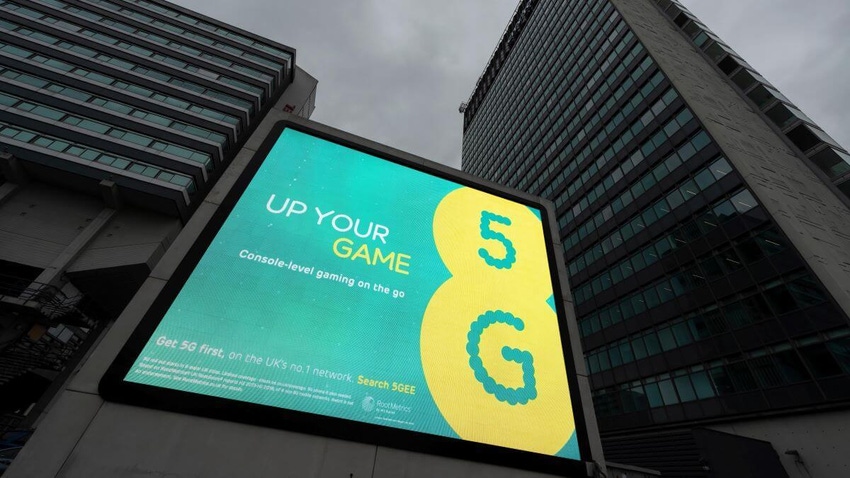Ciena boss warns of 'structural' fall in 5G spending
Gary Smith's comments came as the optical equipment maker's share price fell 15% on weak outlook for the current fiscal year.

Struggling to grow sales, and with costs on the rise, many telcos have turned miserly in their relationships with suppliers. By now, it's a familiar story to anybody in the network equipment sector. The phenomenon of "inventory corrections" in North America, after operators there previously built stockpiles as mountainous as Smaug's treasure, was partly blamed for dismal results at Ericsson and Nokia last year. But what if this is not just a cyclical trough but a permanent squeeze?
The possibility was this week aired by Tal Liani, an analyst with Bank of America, during Ciena's routine financial update for the first quarter of the current fiscal year. The optical equipment maker did not have the most lucrative three months leading up to the end of January. Sales fell nearly 2%, compared with the year-earlier period, to about $1.04 billion, and revenues from product sales – accounting for 80% of the total – were down 5%. Ciena's net profit slumped more than a third, to just $49.5 million.
Worse, and perhaps prompting Liana's question, was the outlook it issued. In the most pessimistic scenario, Ciena anticipates a 9% plunge in revenues for this current fiscal year. In the most upbeat, it is looking at a 2% fall. Previously, it had been guiding for growth of between 1% and 4%. Markets reacted by dumping stock and Ciena's share price had sunk nearly 15% by close of business on March 7. It is now worth slightly less than it was about three years ago.
Hence the analyst concern. "[You're] talking about cyclical downturn that will recover absorption of inventory. When you talk to the carriers, they talk about a permanent decline in spending, their desire to spend less," said Liani. "Or do you really have confidence that this is just cyclical?"
5G malaise
Acknowledging it was a "good question," Ciena CEO Gary Smith offered some resistance. In North America, he remains confident the downturn is not "structural" and still about inventory "absorption," as Liani described it. But in Europe, he clearly thinks otherwise. "You have 180 carriers in Europe," he said. "You have some tiny jurisdictions with multiple carriers. It makes no economic sense," he went on, alluding to "inherent structural challenges."
The remarks came shortly after Mobile World Congress (MWC), the telecom industry's big annual tradeshow in Barcelona, where the bosses of Europe's "big four" telco groups found harmony on stage in their complaints about regulation. Europe needs to plug a €200 billion (US$219 billion) investment gap to match North America and parts of Asia on connectivity, was a key message. And regulators' antipathy to mergers is partly to blame. In four-player mobile markets, such as the UK's, the smallest operator frequently does not cover its cost of capital, according to research from Barclays. Spending consequently suffers.
Nevertheless, Smith's other quite big caveat was about "reticence around 5G," regardless of country. "Obviously, it's not been the monetization event for many carriers around the world that was anticipated," he said. "And I do think that there's a curtailing of that spend, which in my own personal belief I think is structural."
Operators do seem increasingly apathetic about spending on a technology that merely seems to provide additional capacity. And some analysts view the talk about "exponential" growth of data traffic on mobile networks with suspicion. William Webb of Access Partnership says the growth rate is slowing and will flatten in the next few years. Whether the slowdown is structural or cyclical, its effect was seen in results published this week by chipmaker Marvell Technology, which reported a 38% year-on-year drop in fourth-quarter sales at its "carrier" division, to $170 million.
Worryingly, for suppliers of mobile network products, there is also apathy within the Next Generation Mobile Networks Alliance (NGMN), a club of big operators, about 6G. "Please let's not make it a hardware refresh … let's not make it an essential part of launching the capabilities that we have to go and rebuild the network," said Howard Watson, the chief security and networks officer of the UK's BT and an NGMN board member, during an interview with Light Reading at MWC.
Smith insisted this 5G lethargy would not have a "major impact on the transmission" market his own company serves. And the good news for his investors is the growing share of sales that Ciena generates from outside telecom. About 54% of first-quarter revenues came from other customer types, mainly cloud providers, and these sales have grown a third since the same period last year, to more than $560.4 million.
"[The] driver for our business is demand for bandwidth," said James Moylan, Ciena's chief financial officer. "Now the people who are building networks, to manage that demand really, the structure has somewhat changed toward the cloud providers. If you go back, ten years ago, they weren't buying any network gear. They're buying a significant part of it today."
That's good news for Ciena, especially if the share keeps growing. But there is little sign that Internet companies are about to pick up the 5G slack and invest in radio units where operators have not. And for the telcos, the role those Internet companies already play in networks may be alarming enough.
Read more about:
EuropeAbout the Author(s)
You May Also Like












